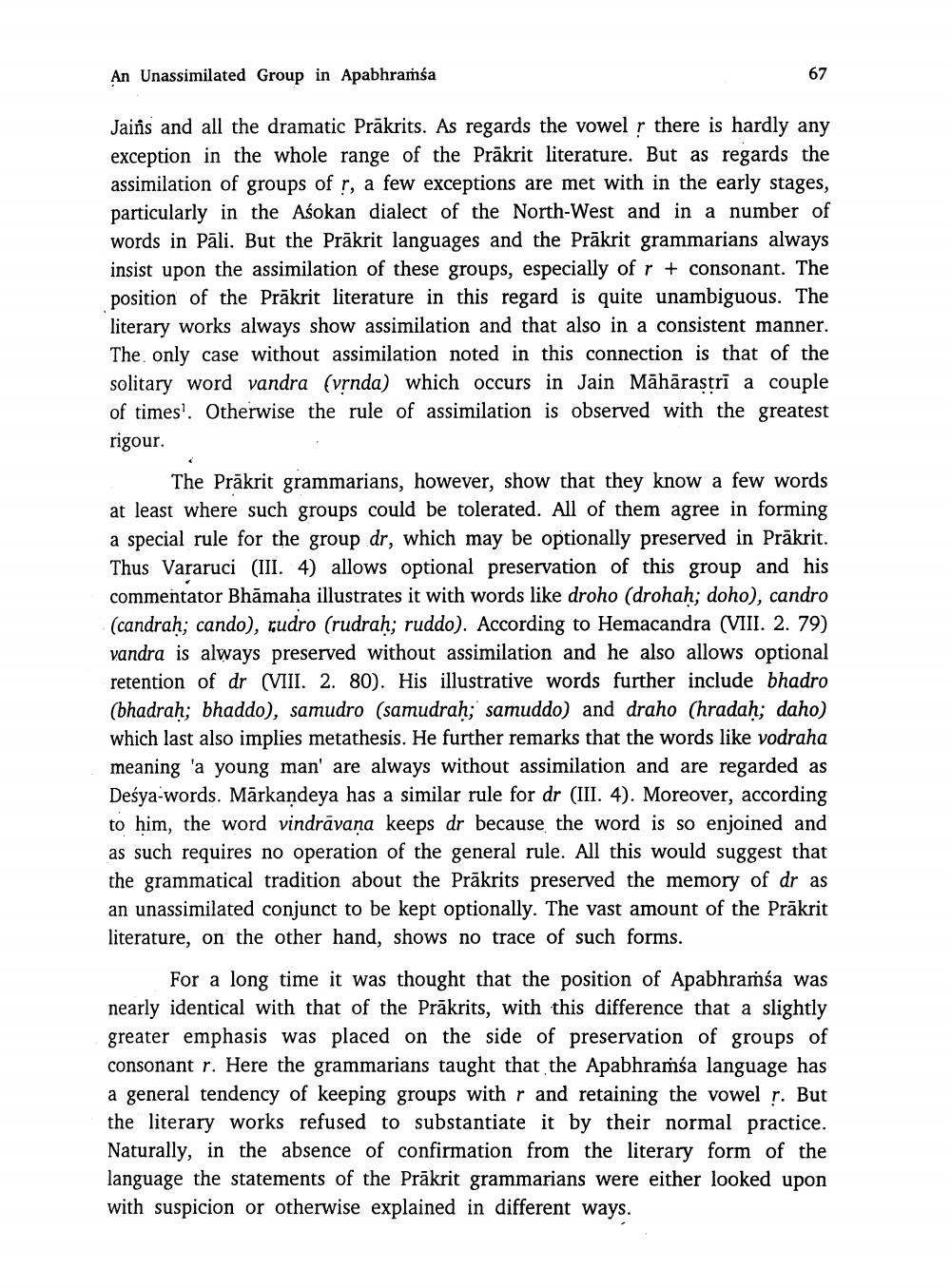________________
An Unassimilated Group in Apabhramsa
67
Jairs and all the dramatic Prākrits. As regards the vowel r there is hardly any exception in the whole range of the Prākrit literature. But as regards the assimilation of groups of ļ, a few exceptions are met with in the early stages, particularly in the Aśokan dialect of the North-West and in a number of words in Pāli. But the Prākrit languages and the Prākrit grammarians always insist upon the assimilation of these groups, especially of r + consonant. The position of the Prākrit literature in this regard is quite unambiguous. The literary works always show assimilation and that also in a consistent manner. The only case without assimilation noted in this connection is that of the solitary word vandra (vrnda) which occurs in Jain Māhārastri a couple of times. Otherwise the rule of assimilation is observed with the greatest rigour.
The Prākrit grammarians, however, show that they know a few words at least where such groups could be tolerated. All of them agree in forming a special rule for the group dr, which may be optionally preserved in Prākrit. Thus Vararuci (III. 4) allows optional preservation of this group and his commentator Bhāmaha illustrates it with words like droho (drohah; doho), candro (candraḥ; cando), rudro (rudraḥ; ruddo). According to Hemacandra (VIII. 2. 79) vandra is always preserved without assimilation and he also allows optional retention of dr (VIII. 2. 80). His illustrative words further include bhadro (bhadrah; bhaddo), samudro (samudrah; samuddo) and draho (hradah; daho) which last also implies metathesis. He further remarks that the words like vodraha meaning 'a young man' are always without assimilation and are regarded as Desya-words. Mārkandeya has a similar rule for dr (III. 4). Moreover, according to him, the word vindrāvana keeps dr because the word is so enjoined and as such requires no operation of the general rule. All this would suggest that the grammatical tradition about the Prākrits preserved the memory of dr as an unassimilated conjunct to be kept optionally. The vast amount of the Prākrit literature, on the other hand, shows no trace of such forms.
For a long time it was thought that the position of Apabhramśa was nearly identical with that of the Prākrits, with this difference that a slightly greater emphasis was placed on the side of preservation of groups of consonant r. Here the grammarians taught that the Apabhramśa language has a general tendency of keeping groups with r and retaining the vowel s. But the literary works refused to substantiate it by their normal practice. Naturally, in the absence of confirmation from the literary form of the language the statements of the Prākrit grammarians were either looked upon with suspicion or otherwise explained in different ways.




